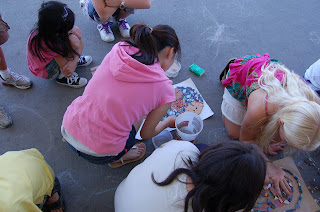Every now and then we get to a point where communication doesn’t work. Our interaction becomes contaminated. Language is a virus says Laurie Anderson in Home of the brave. This rings a bell to our own experiences.
In communications we want to maintain a positive flow. Our
interaction involves triggers and reactions. Let’s look at them as a mechanism.
Just like my hand is a tool that helps me along the day, I want my
communications with others to work for me.
I need to know my tools and remember to
use them. Three simple words and one expression that we often use: Listen, Ask, Suggest and Take action. They crystallize a set
of ideas. As we interact, they serve as our tool.
Assuming we understand each other’s words, we need to let
them into our brains. We need to Listen. When is it that we usually find it
easiest to listen? For most of us I dare to assume it would be music. When you
are listening to someone else, it could be an interesting experiment to listen
to the music in the words you hear.
Ask. Showing the fact that you are listening has many forms.
The question moves the conversation forward whether by establishing a sense of
mutual understanding or even making progress with ideas. Rephrasing your
companion’s words is also a sort of question: “did I hear you OK?”
Questions can be tricky though. You don’t want to give the
impression of doubt when the intention is to build trust.
Sometimes the question itself promotes an idea that both of
you are interested in exploring. Our interaction involves a form of negotiation.
Suggest
After gaining information by going back and forth with the
conversation, ideas that come up inform our progress.
These ideas are like
roads that lead to various destinations. You reach an intersection and
make a
choice. You know what needs to be
done: Take action. If you need to do it yourself this
is almost easy. If you want someone else to act for you, you’ve come full
circle.
Our goal is to nurture communications that last. Take the first letters of each of the
four steps we’ve just gone through and this is what you get: L - A – S -
T.
It always seems simple as an idea. But as we go through the day we want to
remember, to listen, to ask, to suggest and eventually, to take action.



















































